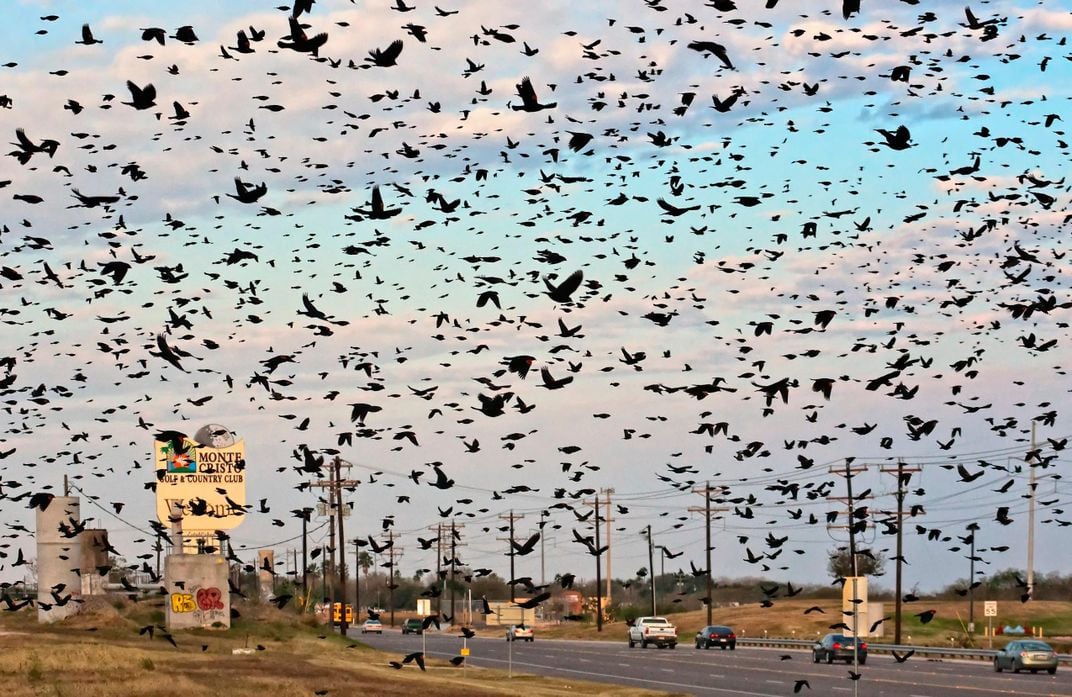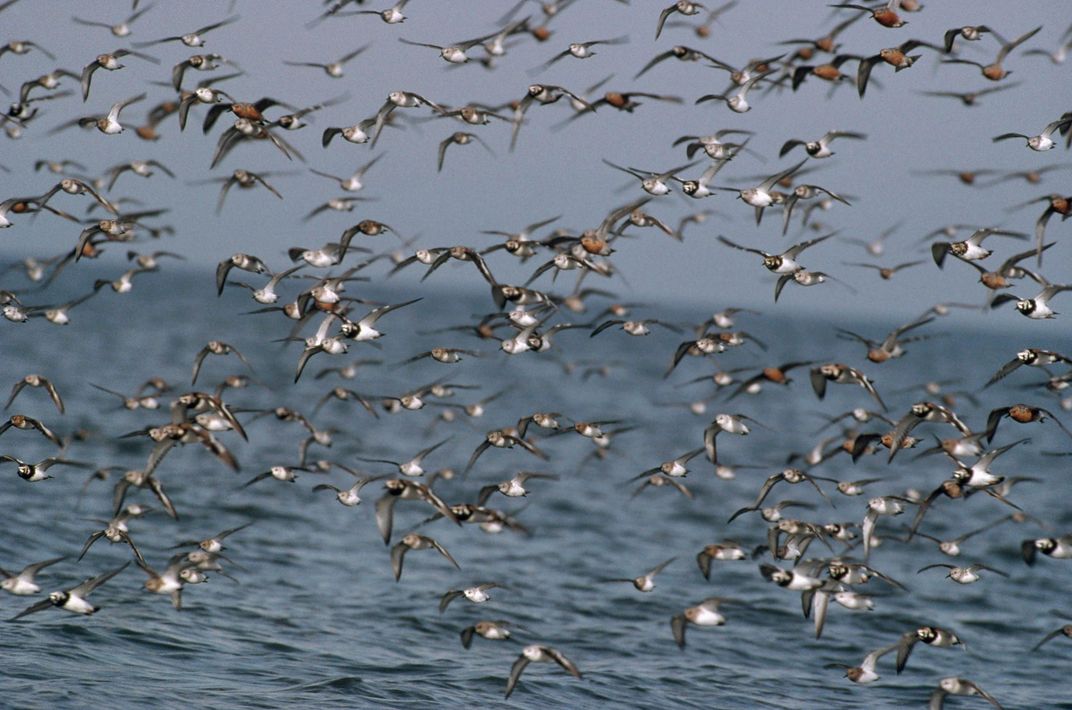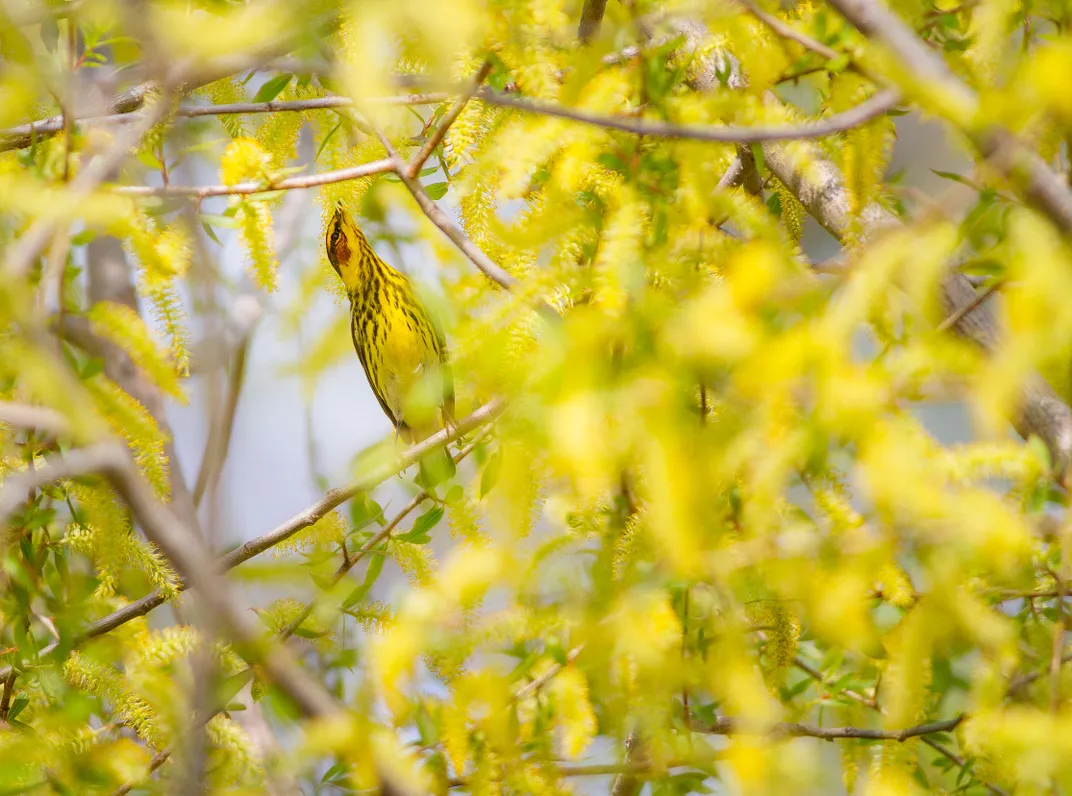The Best Places in the U.S. to See Spring’s Migrating Birds
Get out your binoculars—birds are making their annual trek north
/https://tf-cmsv2-smithsonianmag-media.s3.amazonaws.com/filer/83/05/8305a316-996f-4b01-b07e-d62fa8b526a7/spring_bird-migration.jpg)
Daffodils, cherry blossoms and tulips aren’t the only things brightening up the thawing landscape now that spring is officially here. Right now, dozens of species of birds have left their winter homes in the south and are embarking on their annual journey north as part of spring migration. In the coming weeks, even more will spread their wings and follow the same route their ancestors once did.
Spring is a particularly wonderful time for bird watching, Timothy Guida, a research technician at the Smithsonian Migratory Bird Center, tells Smithsonian.com. “During the spring, the males have on their beautiful plumage to attract mates,” he says. “So you’ll see birds at their most vibrant.”
Another bonus to spring migration is that it occurs as a mass movement. It takes place over a shorter timeframe than its fall counterpart, since birds are anxious to reach their breeding grounds and begin mating. “During the fall, the timespan for migration is much broader, since birds typically start leaving once the temperature drops and there’s a lack of food,” says Guida. “But in the spring, you’ll see more of a blitz over the span of several weeks, since timing is more imperative for birds to begin reproducing and raising young.”
Birds already on their epic odyssey include American White Pelicans, Black-chinned Hummingbirds, Orange-crowned Warblers, Hooded Orioles, Common Loons, Double-crested Cormorants and Purple Martins, among others, according to a weekly report published by BirdCast, a subsection of The Cornell Lab of Ornithology. And birds aren’t the only species in migration mode. Monarch butterflies are also leaving their winter homes for the north.
From now until late May, professional birdwatchers and novices alike can set their sights on flocks making their way north all across the United States. To join their ranks, you just need to know where to look. But don’t wait too long—by early June, spring migration is a wrap. Here are five places in the United States to get started.
Rio Grande Valley, Texas

Just about any location along the Gulf of Mexico’s Texas side is a great place to see migratory birds. And it’s a welcome sight for birds, too, since it’s the first solid landmass they’ve seen since leaving behind their wintering grounds in Latin America and the Caribbean. Because of this, Texas is known for its “bird fallouts,” a phenomenon that occurs when flocks of tired migrants land upon the first sight of landfall. (No, they don't drop from the sky like cannon balls.) “Often birds have been flying for 18 hours straight over the ocean, so they’re exhausted,” Guida says. “It makes Texas a migratory bonanza.”
One spot Guida recommends is the Clive Runnells Family Mad Island Marsh Preserve in Matagorda County, where he’s manned bird banding stations to track migrations. Sandhill cranes, geese and warblers can be seen here en mass. Or, head to the Rio Grande Valley, a region four hours south of the preserve known for its combination of marshlands and woodlands. That landscape makes the valley a great spot for songbirds and shorebirds to refuel. According to the World Birding Center, nearly 500 species have been spotted there over the years, including long-billed thrashers and black-crested titmouse.
Delaware Bay

The best time to witness spring migration in the Delaware Bay, an estuary of the Delaware River that slices between New Jersey and Delaware, is in early May when horseshoe crabs begin spawning along the coastline. During this time, hundreds of thousands of shorebirds flock to area beaches and marshes to snag eggs after unsuspecting female horseshoe crabs have buried them in the sand. One species in particular to look out for during this annual looting is the red knot, a threatened shorebird known for conquering one of the longest migration routes of any species—more than 9,000 miles from the southern tip of South America to the Canadian Arctic. Other birds that turn the bay into their very own buffet include sandpipers, sanderlings and ruddy turnstones.
Great Lakes

Spanning more than 94,000 square miles and consisting of some 32,000 islands, the Great Lakes region on the Canadian-American border is riddled with wetlands, forests and other habitats that are prime rest spots for flight-weary birds. “The Magee Marsh Wildlife Area [east of Toledo, Ohio, on Lake Erie] is probably one of the best places to go, since it’s an area where birds stop before crossing the open water,” Guida says.
The marsh is particularly popular with myrtle, yellow and Cape May warblers—mid-to-late May is the ideal time to see migrating songbirds. It also coincides with the annual Biggest Week in American Birding, a birding extravaganza organized and hosted by Black Swamp Bird Observatory that will take place May 5 through 14 and includes guided walks, lectures and even a bird tattoo contest.
Central Park, New York City
/https://tf-cmsv2-smithsonianmag-media.s3.amazonaws.com/filer/a7/c2/a7c29a34-fd2c-483f-a220-0439ca83d55c/42-19509662.jpg)
It may come as a surprise, but Central Park in New York City is a birders’ paradise. For decades, the 843-acre park in the center of the city has been an under-the-radar stomping ground for binocular-wielding birders hoping to spy one of the 30-something warbler species that stop here during spring migration before heading farther north. One of the most popular spots in the park for birders is The Ramble, a 36-acre, heavily wooded area that’s less frequented by tourists. Over the years more than 230 species have been seen there, including 40 that reside there year-round. “The diversity of birds there rivals, and in some cases is better than, some forests,” Guida says.
In the spring, the park also holds weekend birding-basics workshops for families interested in honing their birding skills.
Point Reyes National Seashore, California
/https://tf-cmsv2-smithsonianmag-media.s3.amazonaws.com/filer/46/89/4689bfc1-d98e-49a6-bc54-d62ae9f29d2e/42-22819800.jpg)
Located about an hour north of San Francisco, the 70,000-acre Point Reyes National Seashore is one of the best places on the Pacific Coast to spot migratory birds. The seashore’s species list boasts nearly 500 species, which is equivalent to half of all known birds in North America. Its variety of habitats, which include estuaries, grasslands and forests, make it an ideal stopover for migrators. Two species in particular to keep an eye out for are the threatened snowy plover (in danger due to a number of factors like poor reproductive success and human disturbance) and the northern spotted owl (threatened due to timber harvesting and loss of habitat).
With all the diversity to be seen among spring migrators, you might worry about how to make the most of your bird watching excursion. “My advice is to not stress out by trying to see everything at once, but instead focus on one or two species and see if you can identify them,” Guida says. “I think people know more about birds than they realize. By comparing the birds you’re seeing to the ones you already know, you can start piecing everything together by color or size and develop birding skills that way. The great thing about birding is that there’s no governing body to the enjoyment of bird watching.”
Planning Your Next Trip?
Explore great travel deals
Smithsonian magazine participates in affiliate link advertising programs. If you purchase an item through these links, we receive a commission.